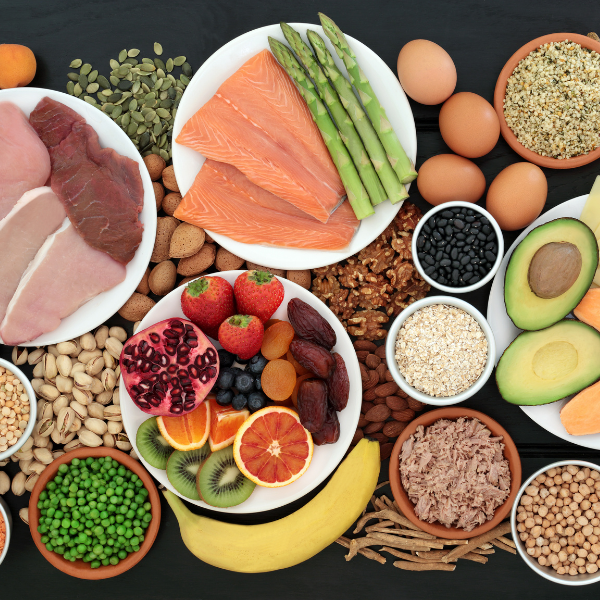When we walk down supermarket aisles, we're bombarded with a plethora of
labels screaming at us from every direction - "natural," "organic,"
"non-GMO," "sugar-free," "low-fat," and the list goes on. One of the
most prevalent yet controversial labels is "natural". But what does
"natural" really mean on food labels? Are health-conscious consumers
being misled by this seemingly innocent label? Let's unpack the true
meaning of the term "natural" on food labels.
The Definition of "Natural" on Food Labels
The term "natural" seems to imply that a product is closer to its raw, unprocessed form and is free from artificial ingredients. However, the actual definition is more complicated and much less standardized than you might think. According to the U.S. Food and Drug Administration (FDA), there is no formal definition for "natural" when used on food labels. The FDA generally allows the use of the term if the food product does not contain added color, artificial flavors, or synthetic substances.
The Controversy Surrounding "Natural" Food Labels
The lack of a clear-cut definition has led to widespread misuse and misunderstanding of the term "natural." This ambiguity often misleads consumers into believing that a product labeled "natural" is healthier or more nutritious, even when that might not be the case. It's not uncommon to find products labeled as "natural" that contain high-fructose corn syrup, which is a highly processed ingredient.
Another point of contention is using genetically modified organisms (GMOs) in "natural" foods. While the FDA doesn't exclude GMOs from its informal definition, many consumers interpret "natural" as being GMO-free, which is not necessarily the case.
Organic vs. Natural Foods
An important distinction is between "natural" and "organic" food labels. Unlike "natural", the term "organic" is strictly regulated by the United States Department of Agriculture (USDA). To be labeled "organic," a product must meet stringent criteria including being grown without synthetic fertilizers or pesticides, not being genetically modified, and being processed without artificial ingredients or preservatives.
Is Natural Better Than Organic?
Though they may seem similar, the terms "natural" and "organic" on food labels convey quite different implications. The label "organic" is strictly regulated by the USDA and indicates that a food product has been produced without the use of synthetic fertilizers, pesticides, genetically modified organisms (GMOs), and artificial preservatives. On the other hand, "natural," as per FDA guidelines, typically means a product doesn't contain artificial flavors, added colors, or synthetic substances. However, "natural" does not rule out using GMOs or certain chemical treatments. Therefore, if you aim for food products free from artificial inputs and GMOs, "organic" is the more reliable and regulated choice. It's important to note that neither "organic" nor "natural" inherently means a product is healthier; this determination should be based on a product's overall nutritional profile and the quality of its ingredients.
Deciphering Food Labels for Healthier Choices
Given the ambiguity of "natural" food labels, how can health-conscious consumers make informed decisions? One key strategy is to focus less on the front of the package and more on the Nutrition Facts and ingredient list. Look for whole foods with minimal ingredients, and be wary of high sugar, sodium, and unhealthy fat content.
Does Natural On Food Labels Mean Healthy?
Despite its wholesome connotation, the term "natural" on food labels does not automatically imply that the product is healthier. The absence of a formal, universally accepted definition for "natural" creates opportunities for misuse, often leading consumers into the misconception that "natural" equals healthy. It's important to understand that a food product labeled "natural" can still contain high levels of sugars, unhealthy fats, sodium, and even genetically modified organisms (GMOs). Instead of solely relying on the "natural" label, consumers should prioritize reading and understanding the Nutrition Facts and ingredient lists. Doing so provides a clearer picture of the actual health value of a food item, helping to discern truly healthy choices from those merely branded as such.
Are Foods Labeled Natural Considered Organic?
While it might be easy to conflate the terms "natural" and "organic", they are not interchangeable when it comes to food labels. Food products labeled as "natural" are not automatically considered "organic." As per the U.S. Food and Drug Administration (FDA), the term "natural" generally implies that the food product does not contain added color, artificial flavors, or synthetic substances. On the contrary, the "organic" label, regulated by the United States Department of Agriculture (USDA), carries much stricter standards. For a product to be labeled "organic," it must be produced without the use of synthetic fertilizers, pesticides, genetically modified organisms (GMOs), or artificial preservatives, and it has to comply with specific animal welfare standards. So, while all organic foods might be considered natural by some definitions, not all foods labeled "natural" meet the standards to be classified as organic.
Become A Conscious Consumer
Understanding food labels, particularly the term "natural," can be a challenging task for even the most health-conscious consumers. It's crucial to delve beyond the marketing buzzwords and truly examine the ingredients and nutritional content. Remember, a "natural" label doesn't necessarily equate to a healthier product. When in doubt, lean towards whole, unprocessed foods for the best nutrition.
While the world of food labeling can be complex and sometimes misleading, educating ourselves about these terms and labels can empower us to make healthier food choices that align with our individual dietary needs and wellness goals.






